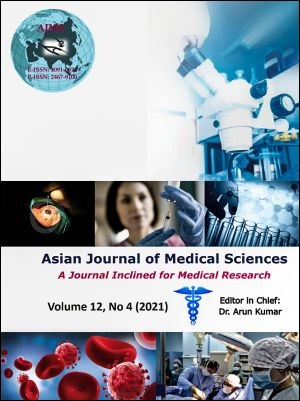Dorsal expansion-related manual disability in verrucae vulgaris patients treated with cryotherapy: A longitudinal study via big data
Keywords:
Cryotherapy, Disability Studies, Extensor Expansion, Human Papillomavirus, Machine LearningAbstract
Background: Common warts frequently occur over the hands and may overlie critical structures, including the extensor expansion of the digits, for which cryotherapy can lead to manual disability.
Aims and Objectives: We aim to implement big data to infer knowledge on the interest of web users regarding the dorsal expansion-related manual disability in verrucae vulgaris patients managed with cryotherapy.
Materials and Methods: We mapped the interest of users of the surface web in connection with five topics: cryosurgery, extensor digitorum muscle, human papillomavirus, manual disability, and verruca vulgaris. We retrieved longitudinal data [2004-2019] concerning the spatio-temporal variations of interest in these topics, using Google Trends. We are also reporting a case of interest while analyzing it using the Bradford Hill criteria.
Results: Sixty-four nations contributed to the spatial (geographic) map, including ten countries from the Middle East and the north of Africa (15.63%). There was high temporal variability concerning cryosurgery 29.61 (+/- 0.94), extensor digitorum muscle 64.43 (+/- 0.86), human papillomavirus 0.01 (+/- 0.01), manual disability 2.89 (+/- 0.13), and verruca vulgaris 9.39 (+/- 0.20). Conjoint inference, via Post-Hoc testing and neural networks [machine learning], assigned the highest synaptic weight [effect size] to “cryosurgery” and “extensor digitorum muscle”, thus indicating that these topics are of prime interest for web users, including anatomists and dermatologists.
Conclusions: We are conveying two messages: 1) Dermatologists are encouraged to collaborate with data scientists to realize the importance of big data for evidence-based dermatology. 2) Physicians should exercise extra caution in managing patients with verrucae vulgaris using cryotherapy.
Downloads
Downloads
Published
How to Cite
Issue
Section
License
Authors who publish with this journal agree to the following terms:
- The journal holds copyright and publishes the work under a Creative Commons CC-BY-NC license that permits use, distribution and reprduction in any medium, provided the original work is properly cited and is not used for commercial purposes. The journal should be recognised as the original publisher of this work.
- Authors are able to enter into separate, additional contractual arrangements for the non-exclusive distribution of the journal's published version of the work (e.g., post it to an institutional repository or publish it in a book), with an acknowledgement of its initial publication in this journal.
- Authors are permitted and encouraged to post their work online (e.g., in institutional repositories or on their website) prior to and during the submission process, as it can lead to productive exchanges, as well as earlier and greater citation of published work (See The Effect of Open Access).




